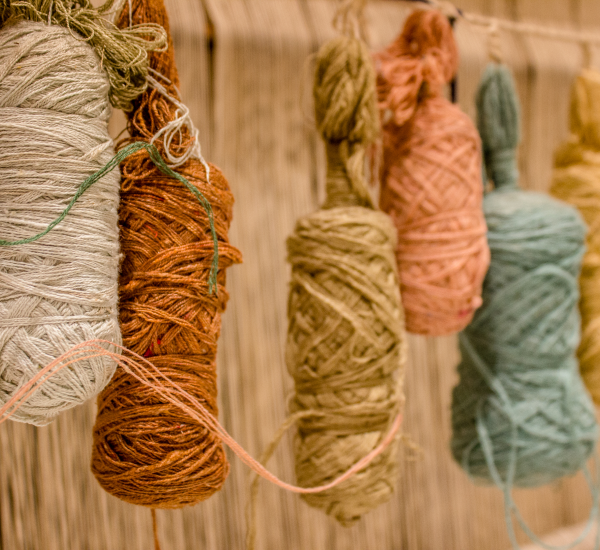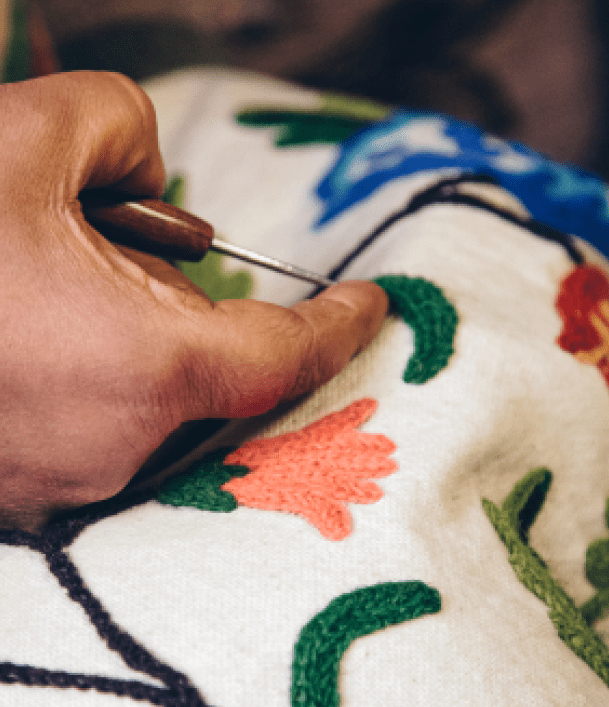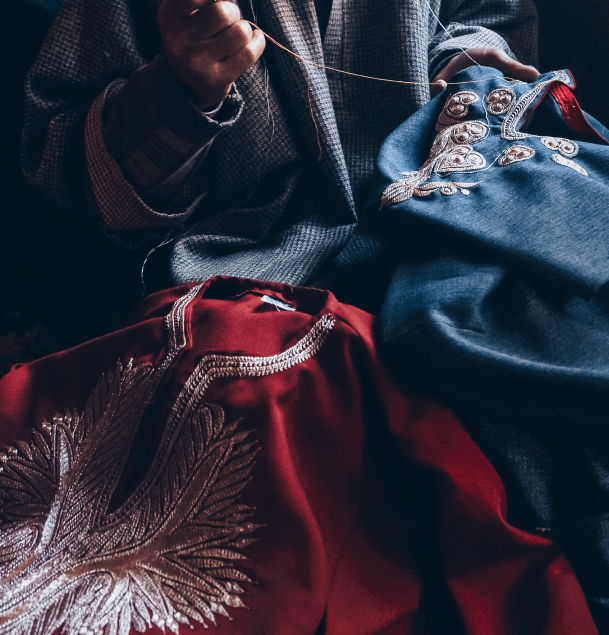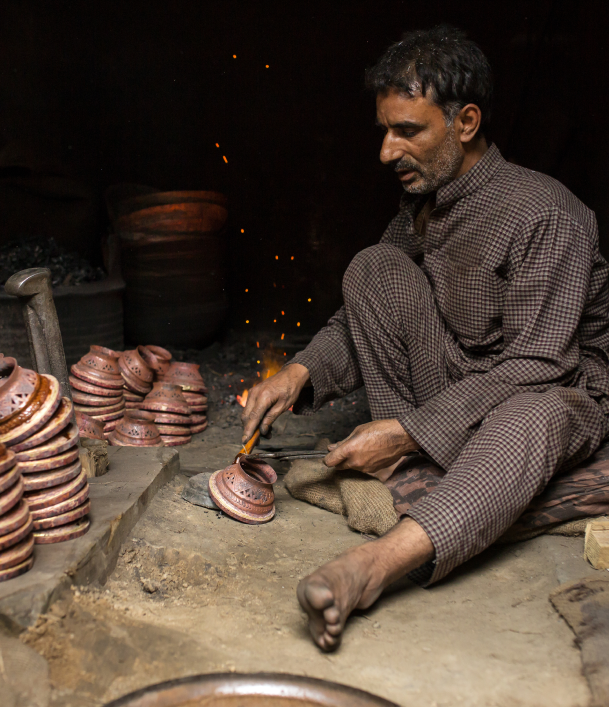

Kashmiri art forms reflect a blend of diverse cultural influences, from Central Asia to Persia and the Indian subcontinent. The intricate embroidery, handmade art forms, and meticulously crafted techniques are testaments to the valley’s unmatched skill and attention to detail. Let’s dive into the rich history behind Kashmiri craftsmanship as these crafts are beautiful expressions of artistry and symbols of heritage, resilience, and identity.
Crewel Embroidery
A hand embroidery technique that once faded into obscurity, Crewel found its way back through the Silk Route and quickly became an integral part of the region’s rich craft heritage. The term “Crewel” is derived from an ancient word, meaning “a curl in a single hair of wool. Traditional crewel embroidery is often associated with Jacobean design in the Western world. However, it’s important to note that Jacobean design is not exclusive to crewel embroidery, nor is crewel limited to Jacobean patterns. Jacobean refers to a style that can be applied to various mediums, whereas crewel work involves embroidery done with wool.
Crewel embroidery is similar to chain stitch, but the materials and designs set them apart. Conventionally, crewel is performed on thick fabrics like wool, known as khaddar, making it ideal for winter furnishings such as curtains and bedding rather than general upholstery. The embroidery is executed, using a hook-like needle with 2 or 3-ply woollen yarn. However, due to growing demand in the furnishing market, crewel embroidery is now also machine-stitched on various fabrics, including velvet, organza, and cotton.
Kashmiri crewel embroidery is known for its vibrant, multi-coloured designs featuring floral and creeper patterns. Common motifs include Pamposh (lotus), Sosan (iris), Dachh (vine), Sumbal and Yambarzal (hyacinth and narcissus), and Dainposh (pomegranate). The intricate process of creating crewel embroidery begins with weaving the base fabric and concludes with a final wash and ironing, producing a beautifully raised, dimensional texture that is both rich and durable.


Tilla Embroidery
Kashmiri Tilla is a traditional embroidery form deeply rooted in the cultural heritage of the Kashmir Valley, with origins dating back to the Mughal era when it adorned the garments of kings and royalty. Over time, Tilla became more widespread and was incorporated into the traditional attire of the Kashmiri people, including pherans, shawls, and wedding dresses.
This embroidery technique stands out for its intricate use of metallic threads, predominantly gold and silver, to create elaborate patterns and designs on various fabrics. The process is highly skilled and time-intensive, involving a specialized needle to craft detailed motifs such as flowers, leaves, and vines. Traditionally, Tilla embroidery was done using real silver or gold, which were hammered into fine threads to embellish garments, particularly bridal attire. These precious metals would develop an antique patina over time, enhancing their allure. However, as the cost of precious metals rose, Tilla evolved, with gold and silver-coloured copper threads replacing the original metals, making the embroidery more accessible.
While often confused with Zari, Tilla and Zari are distinct. Tilla threads are metallic under wires coated with gold or silver colour, making them thicker and giving the embroidery a bold, embossed, and multi-dimensional appearance. In contrast, Zari uses silk thread as a base, covered in silver or gold hues, resulting in a more delicate finish that lies flat against the fabric. Moreover, Tilla’s technique involves fastening each stitch securely, ensuring the embellishment’s durability, a characteristic not matched by Zari embroidery.
Copperware
Copperware has withstood the test of time, evolving into a range of elegant products, including cooking pots, trays, and decorative items like vases, vessels, and lampshades. Across the globe, copper has been valued for centuries, not only for its aesthetic appeal but also for its health benefits. As an essential mineral, copper plays a crucial role in our bodies, even in small amounts, and is known for its antimicrobial properties, effectively inhibiting the growth of bacteria and viruses.
The craft of copperware is deeply embedded in Kashmiri culture, with a history that traces back over seven hundred years to artisans and traders from Iran and Iraq. During the Mughal era, Kashmiri metalwork was predominantly focused on crafting gun barrels and swords, employing techniques like casting, forging, and the decorative enameling known as Meenakari. By the late 19th century, as the Mughal influence waned, Kashmiri metalworkers shifted their skills to creating vessels.
Today, the legacy of this craft is evident in the large, beautifully crafted copper samovars, cups, glasses, tasht-naaris, traamee (dinner plates), jugs, serving bowls, trays, and degh (round-bottomed cooking pots) that adorn shops in downtown Srinagar. In Kashmir, copperware is often left in its natural tone for ornamental purposes, with the intricate hammer and chisel engravings, known as Naqashi, serving as a key factor in determining the value of each piece, along with its weight. Kashmiri artisans embellish these items with intricate floral motifs, calligraphy, geometric patterns, and iconic chinar leaves, giving each piece a grand and timeless look.
